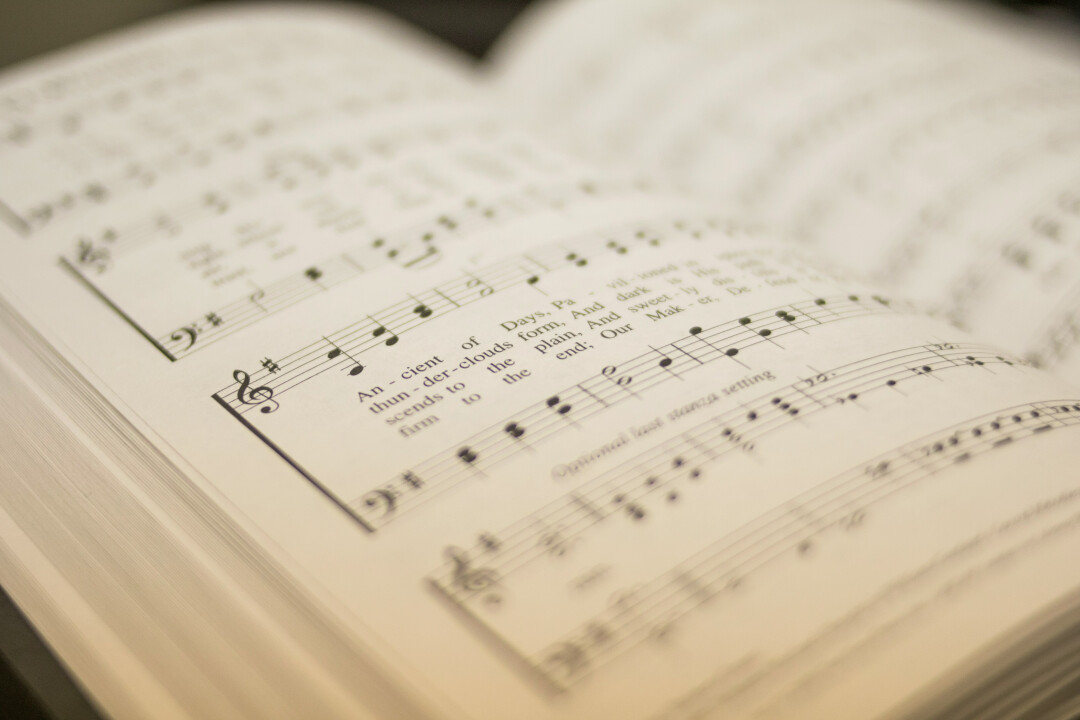
Let the word of Christ dwell richly among you, in all wisdom teaching and admonishing one another through psalms, hymns, and spiritual songs, singing to God with gratitude in your hearts.
Colossians 3:16 CSB
From Moses and the Israelites singing a song of deliverance after crossing the Red Sea to Paul and Silas lifting their voices in praise from a Roman prison, singing has been a vital part of the Christian faith. Throughout all of history, believers have lifted their voices to God in praise, lament, and thanksgiving. One way that this type of worship has taken form is through hymns. Hymns are an expression of devotion but are also tools for teaching and uniting the people of God.
Perhaps you are someone who delights in singing hymns. Just the thought of them brings a warmth to your soul that is closely tied to fond memories and reflective worship. Or perhaps, what seems to be a bit more common, is that you aren’t particularly fond of hymns. You think that they are boring and don’t make any sense. But regardless of your personal preferences or feelings, hymns are rooted in both truth and tradition.
The earliest hymns date back to the 7th century B.C. But what we know of hymns today was really a result of a movement of the church in the Middle Ages. At this time, music within the church service was often quite elaborate. Sung by a multi-part choir and typically sung in Latin, this part of the church service was a time of quiet observation and reflection for most who attended. But as the Protestant Reformation caught wind, worship was brought back to the people.
Leaders such as Martin Luther and John Calvin both saw the importance of congregational singing. It was a time for the bride of Christ, the church, to come together and worship God as one body. Luther penned hymns that reflected Biblical truth in both memorable and singable lines. An example of this is his well-known and time-tested hymn, “A Mighty Fortress is Our God.” Calvin, on the other hand, advocated for simply singing the Psalms and Scripture, but doing so altogether as the body of Christ. Both saw the benefit of giving the gift of worship, through music and singing, back to each person who attended a church service.
As the church continued to grow, the 18th century brought about some of the most beautiful and well-known hymns for congregations to sing. They were devotional, doctrinal, and deeply rooted in Scripture. They often reflected on the whole story of redemption that is found in Christ. Songs like Isaac Watts’, “When I Survey the Wondrous Cross” and Charles Wesley’s, “Come, Thou Long Expected Jesus” are still sung frequently today. Why have these songs held on? Perhaps it is because they are not just musical pieces, but that they hold deep truth. They are meant to be sung by engaging both the heart and the mind.
Consider this stanza from “When I Survey the Wondrous Cross.”
Were the whole realm of nature mine
That were a tribute far too small
Love so amazing so divine
Demands my soul my life my all
Or this stanza from “Come, Thou Long Expected Jesus.”
Born thy people to deliver,
born a child and yet a King,
born to reign in us forever,
now thy gracious kingdom bring.
By thine own eternal spirit
rule in all our hearts alone;
by thine all sufficient merit,
raise us to thy glorious throne.
Both hymns are examples of songs with deep theological reflections and scriptural truths. They help us to see our Savior’s great love and His plan of redemption. They declare Biblical truths that we see in both the story of the incarnation and the resurrection.
In today’s worship culture, music often chases trends or emotional highs. Neither of these things are wrong. We sing many new, modern-day worship songs in our modern churches. Here at Sunnybrook, we make sure that they are theologically sound and doctrinally pure, agreeing with our beliefs. Nevertheless, they are often written in such a way as to bring the worshipper into a heightened sense of emotion and presence. As we sing them, we must check our heart posture to make sure that we are not getting caught up in the song simply because of a drum build or a guitar riff, but that we are focusing on the One who is worthy of our worship.
Perhaps that is why hymns can feel like a breath of fresh air. They offer something different: depth and richness. They are a way of passing down the faith, word by word, verse by verse. Good hymns do more than make us feel; they help us think rightly about God, His grace, and His promises.
Whether drawn directly from Scripture or carefully crafted by faithful believers, hymns give us words to express our hope, our need, and our joy in Christ. They remind us that worship is not about performance or preference but about honoring the Lord with reverent praise and sound doctrine.
Today, at Sunnybrook, we sing both modern-day worship songs and hymns of that past. The hymns connect us with the great cloud of witnesses who have gone before us. The modern worship songs bring word and thought to some of our inmost emotions. Together, they invite us into worship that helps us to see our Savior, His great love, and the richness of redemption available to us from the Father.
In joining with other believers in worship, which was at the heart of the hymnody movement, we take part in something much bigger than ourselves: a timeless chorus of truth, echoing from Scripture through the centuries, and lifting our hearts to the One who is worthy of all praise.
Cover photo by Michael Maasen on Unsplash
© Copyright 2024. Unless otherwise noted, all Scripture quotations taken from The Holy Bible, New international Version® NIV® Copyright © 1973 1978 1984 2011 by Biblica, Inc.™ Used by permission. All rights reserved worldwide.



